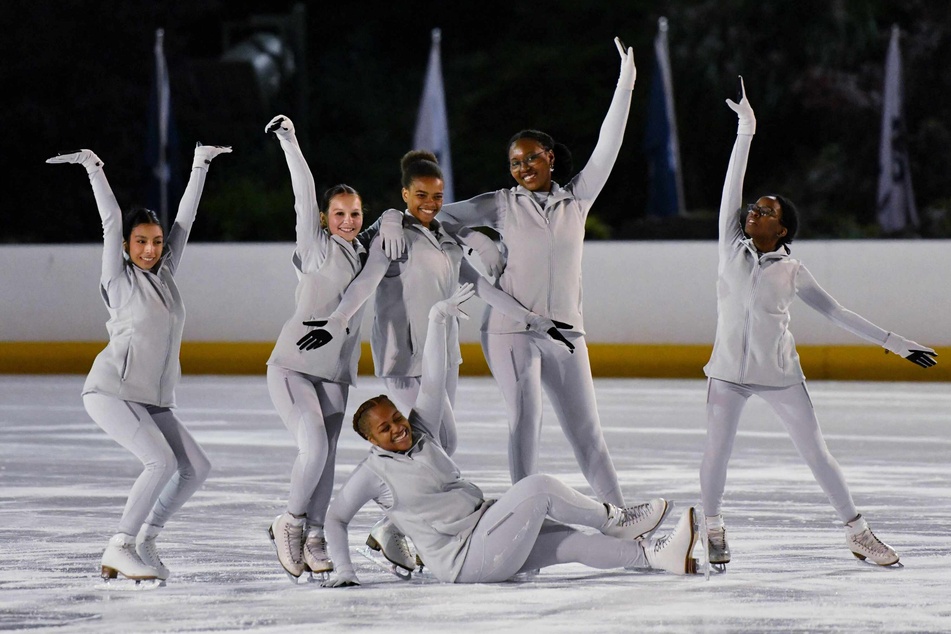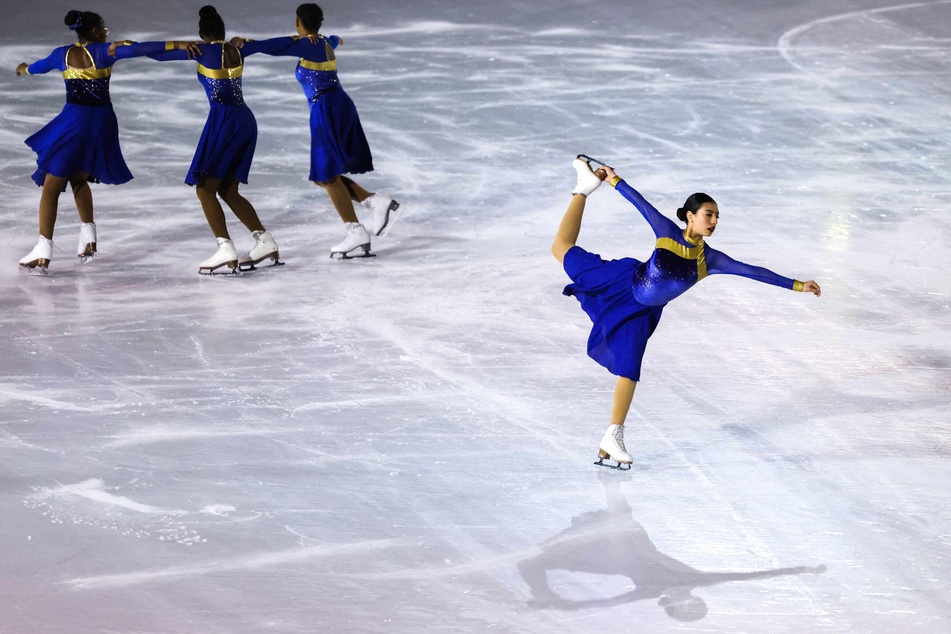New York's Figure Skating in Harlem makes fire on ice and "champions in life"
New York, New York - One by one, young Black and biracial women in dresses and sleek costumes took to the ice in New York for a very special occasion: Figure Skating in Harlem's annual ice show. The NYC organization has redefined what figure skaters look like, and how much they can achieve.

Figure Skating in Harlem (FSH) staged its annual winter show last week, practicing at rinks in Central Park and Riverbank State Park to delight an audience on a glistening rink.
Most of the 300 students who participate in FSH's programs every year live in Harlem or the Bronx, and are from the poorest corners of New York.
The organization "combines the power of education with access to the artistic discipline of figure skating to build champions in life" for women of color, according to its mission. It provides New York students tutors and counselors, while also teaching them the winter sport and life skills after school.
Donning costumes and white skates, the amateur ice skating enthusiasts effortlessly twirled on the ice last weekend in FSH's 27th annual ice show There's No Place Like Home, bringing classics from The Wizard of Oz and The Wiz to life.
Next, the organization is gearing up for its annual fundraising gala filled with celebrities and Olympic athletes, Reaching For The Stars, on April 17.
What is Figure Skating in Harlem?

When the nonprofit FSH, located on 125th Street in Harlem, was founded in the 1990s, figure skating was "not a sport that many Black and brown girls participated in," said founder Sharon Cohen.
FSH skater Nadia Neil (17) told AFP the program was her "whole life."
"I don't remember a time in my life before Figure Skating in Harlem," she said, having joined at the age of six.
"I started to slowly learn and evolve and grow. And it was a really beautiful thing. I felt like a butterfly emerging from a cocoon," said fellow figure skating student Ashley Prentice.
"I just feel like whenever I skate, I feel so powerful and free," said Prentice, a Black teenager who described finding family and community through FSH.
The idea of bringing figure skating to Harlem dates back to 1991 when several Black families and Cohen, a white former professional ice skater, got together.
"It was really the community itself that built this program, year after year," Cohen said.
Tailored to school-age children, FSH also offers academic support.
"Education was really the foundation. That's what could open up many more doors for their future," said Cohen.
Almost all of its women and girls, aged between 5 and 30 years old, identify as Black, Hispanic, or mixed race, and more than nine in 10 are from low- or middle-income households, the org said.
"Sometimes, young girls in Harlem don't get that support that they need," said Neil, adding that some get "led down a wrong path."
At FSH, she is able to take advantage of vocational evening classes to supplement her studies.
Cohen said that ice skating mirrors life's challenges: "You begin by failing. You get on the ice and you fall."
"It's uniquely about learning what you do once you fall, and how you get back up, and do it again. And that there's nothing wrong with failing."
The group says that success – and failure – on the rink, as well as the academic support, have lasting effects.
Almost 90% of FSH's enrollees go on to get top marks at school, with many going on to higher education, according to the organization.
Cover photo: CRAIG BARRITT / GETTY IMAGES NORTH AMERICA / GETTY IMAGES VIA AFP